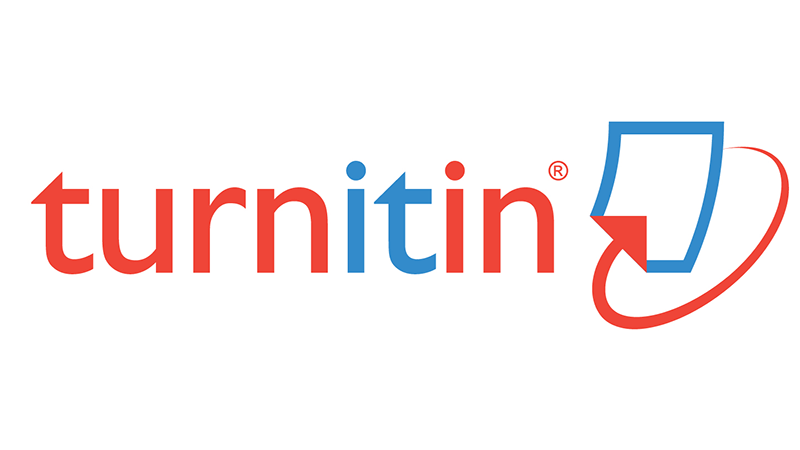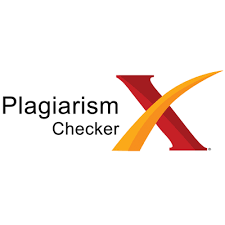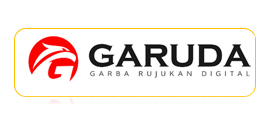PERTIMBANGAN PEMILIHAN STRATEGI PEMBELAJARAN SEJARAH DENGAN ORIENTASI STUDENT ACTIVE LEARNING DI SMA
Abstract
Today’s, learning paradigm has begun to be directed at student activities become learning centres. History learning, which is identical to the teacher’s domination with the lecture method, has begun to be transformed into empowering independently learning students activities, the goal is oriented towards student active learning. To implement this idea, it’s necessary to develop a history learning strategy expected to be achieved that goal. In developing learning strategies that are oriented towards student activities, some basic considerations that are elements in history learning must be considered to provide great opportunities for students to build their knowledge independently. This article is based on the study of literature, then produce an idea as a contribution to improving the quality of history learning.
Keywords
Full Text:
PDFReferences
Abdullah, T. (1985). Sejarah Lokal di Indonesia. Gadjah Mada University Press.
Abidin, N. F. (2020). Pembelajaran Sejarah Lokal di Sekolah Pedesaan dan Vokasi. Jurnal Pendidi-kan Sejarah Indonesia, 3(1), 88–99.
Ahmad, T. A. (2016). Sejarah Kontroversial Di Indonesia: Perspektif Pendidikan. Yayasan Pustaka Obor Indonesia.
Amato, J. A. (2002). Rethinking Home: A Case for Writing Local History. University of California Press.
Ammert, N., Sharp, H., Löfström, J., & Edling, S. (2020). Identifying Aspects of Temporal Orienta-tion in Students’ Moral Reflections. History Education Research Journal, 17(2), 132–150.
Barton, K. C., & Levstik, L. S. (2004). Teaching History for the Common Good. Taylor & Francis.
Booth, A. (2003). Teaching History at University: Enhancing Learning and Understanding. Routledge.
Carretero, M. (2017). Palgrave Handbook of Research in Historical Culture and Education. Springer Berlin Heidelberg.
Dewey, J. (2004). Democracy and Education: An Inroduction to the Philosophy of Education. Global Media.
Dick, W., Carey, L., & Carey, J. O. (2015). The Systematic Design of Instruction (Eighth edition). Pearson.
Drake, F. D., & Brown, S. D. (2003). A Systematic Approach to Improve Students’ Historical Think-ing. The History Teacher, 36(4), 465–489.
Efendi, M. Y., Lutfi, I., Utami, I. W. P., & Jati, S. S. P. (2018). Pengembangan Media Pembelajaran Sejarah Augmented Reality Card (Arc) Candi–Candi Masa Singhasari Berbasis Unity3D pada Pokok Materi Peninggalan Kerajaan Singhasari untuk Peserta Didik Kelas X KPR1 SMK Negeri 11 Malang. Jurnal Pendidikan Sejarah Indonesia, 1(2), 176–187.
Epstein, T. (2009). Interpreting National History: Race, Identity, and Pedagogy in Classrooms and Communities. Routledge.
Gall, M. D., Gall, J. P., & Borg, W. R. (2003). Educational Research: An Introduction. Pearson Edu-cation, Inc.
Garg, B. (2007). Teaching of History. Rajat Publications.
Giroux, H. A. (2011). On Critical Pedagogy. Continuum.
Gunarsa, dkk. (2008). Psikologi Perkembangan Anak dan Remaja. PT BPK Gunung Mulia.
Hariyono. (2017). Sejarah Lokal: Mengenal yang Dekat, Memperluas Wawasan. Jurnal Sejarah dan Budaya, 11(2), 160–166.
Hariyono. (2018). Pendidikan Sejarah dan Karakter Bangsa Sebuah Pengantar Dialog. Jurnal Pen-didikan Sejarah Indonesia, 1(1), 1–22.
Husbands, C., Kitson, A., & Pendry, A. (2003). Understanding History Teaching. Open University Press.
Kelly, T. M. (2013). Teaching History in The Digital Age. The University of Michigan Press.
Kementerian Pendidikan dan Kebudayaan. (2017). MODEL SILABUS MATA PELAJARAN SEKOLAH MENENGAH ATAS/SEKOLAH MENENGAH KEJURUAN/MADRASAH ALIYAH/MADRASAH ALI-YAH KEJURUAN (SMA/MA): MATA PELAJARAN SEJARAH INDONESIA. Kementerian Pendidi-kan dan Kebudayaan Republik Indonesia.
Kreisberg, S. (1992). Transforming Power: Domination, Empowerment, and Education. SUNY Press.
Kuntowijoyo. (2005). Pengantar llmu Sejarah. Bentang Pustaka.
Labbett, B. D. C. (1979). Local History in the Classroom. The Social Studies, 70(2), 62–66.
Lee, J. K., & Molebash, P. E. (2014). Becoming Digital: Using Personal Digital Histories to Engage Teachers in Contemporary Understandings of Teaching Social Studies. The Journal of Social Studies Research, 38(3), 159–172.
Lévesque, S. (2008). Thinking Historically: Educating Students for The Twenty-First Century. Buffa-lo: University of Toronto Press.
Mahardika, M. D. G. (2020). Kepentingan Rezim dalam Buku Teks Sejarah di Sekolah. ISTORIA: Jurnal Pendidikan dan Sejarah, 16(2), 1–7.
Mahardika, Moch. D. G., & Putra, N. W. (2020). The Utilization Interactive Digital Media Comic In Indonesian Historical Learning to Support Independent Learning at SMA Al-Izzah. Seminar Nasional Pembelajaran Sejarah (SPNS UNS 2020), 184–192.
Metzger, S. A., & Harris, L. M. (Ed.). (2018). The Wiley International Handbook of History Teaching and Learning (First edition). Wiley-Blackwell.
Priansa, D. J. (2019). Pengembangan Strategi & Model Pembelajaran. Pustaka Setia.
Rusman. (2012). Model-Model Pembelajaran. PT Raja Grafindo Persada.
Sayono, J., Ayundasari, L., Sulistyo, W. D., & Ridhoi, R. (2019). Utilization of Syphon Metro Kepan-jen as Outdoor Learning Site for History Students. 69–73.
Seixas, P. C. (Ed.). (2004). Theorizing Historical Consciousness. University of Toronto Press.
Sharan, Y., & Sharan, S. (1992). Expanding Cooperative Learning Through Group Investigation. Teachers College Press.
Sjamsuddin, H. (2007). Metodologi Sejarah. Ombak.
Slavin, R., Sharan, S., Kagan, S., Hertz-Lazarowitz, R., Webb, C., & Schmuck, R. (Ed.). (1985). Learning to Cooperate, Cooperating to Learn. Springer US.
Sugiyono. (2012). Metode Penelitian Pendidikan: Pendekatan Kuantitatif, Kualitatif dan R&D. Alfabeta.
Sulistyo, W. D. (2019). Study on Historical Sites: Pemanfaatan Situs Sejarah Masa Kolonial di Kota Batu Sebagai Sumber Pembelajaran Berbasis Outdoor Learning. Indonesian Journal of Social Science Education (IJSSE), 1(2), 124–135.
Sulistyo, W. D., Nafi’ah, U., & Idris, I. (2019). The Development of E-PAS Based on Massive Open Online Courses (MOOC) on Local History Materials. International Journal of Emerging Tech-nologies in Learning (IJET), 14(09), 119. https://doi.org/10.3991/ijet.v14i09.10143
Thorp, R., & Persson, A. (2020). On Historical Thinking and The History Educational Challenge. Ed-ucational Philosophy and Theory, 52(8), 891–901.
Tim Redaksi Historia. (t.t.). Historia: Masa Lampau Selalu Aktual [Web Site]. Historia.id. https://historia.id/
Utami, I. W. P. (2020). Pemanfaatan Digital History Untuk Pembelajaran Sejarah Lokal. Jurnal Pendidikan Sejarah Indonesia, 3(1), 52–62.
Villacañas de Castro, L. S. (2016). Critical Pedagogy and Marx, Vygotsky and Freire: Phenomenal Forms and Educational Action Research. Palgrave Macmillan.
Warto. (2017). Tantangan Penulisan Sejarah Lokal. Jurnal Sejarah dan Budaya, 11(1), 153–159.
Zed, M. (2004). Metode Penelitian Kepustakaan. Yayasan Obor Indonesia.
DOI: http://dx.doi.org/10.17977/um0330v4i1p9-21
Refbacks
- There are currently no refbacks.

This work is licensed under a Creative Commons Attribution-ShareAlike 4.0 International License.
Editorial office:
History Department, Faculty of Social Science,
Universitas Negeri Malang
Jl. Semarang No.5 Kota Malang 65145,
Phone. (0341) 551312,
email: jpsi@um.ac.id
Website: http://journal2.um.ac.id/index.php/sejarah/index
E-ISSN 2622-1837

This work is licensed under a CC BY SA 4.0.









